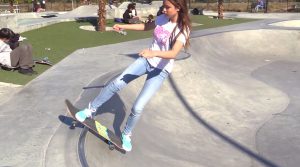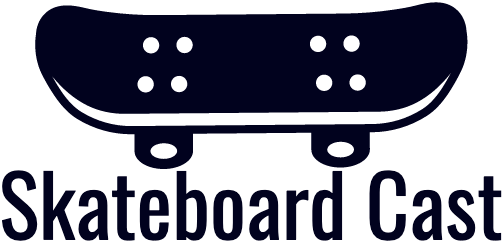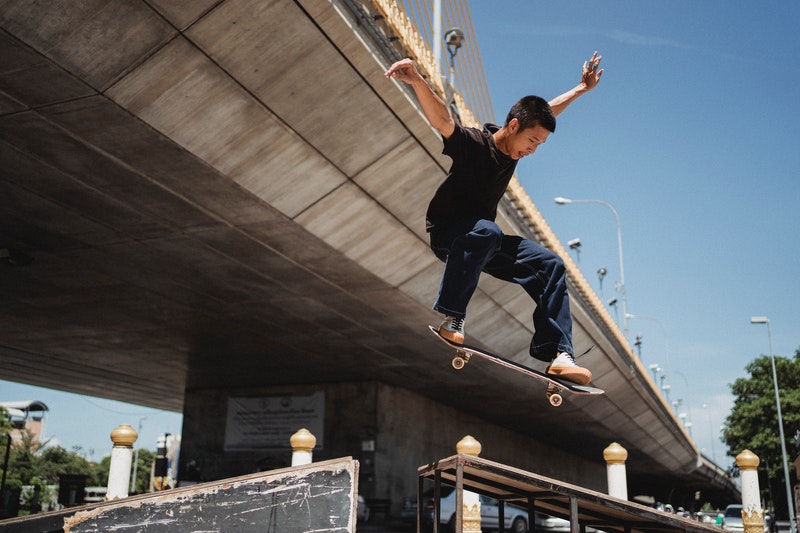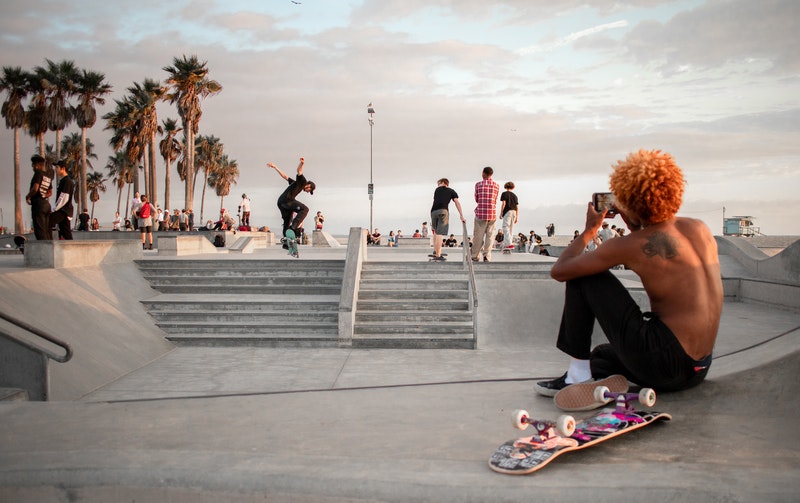Introduce
When you are ready to master skating tricks, it’s a fantastic sensation. However, before performing tricks that demand a high level of expertise, begin with these ten easy tricks on skateboards to improve your stability and feel for sliding the board.
Accidents like fractured bones and concussions are more likely if you go directly into hard skating stunts before learning your balance and mobility. So, let’s check these tricks out!
[toc]
Easy Tricks On Skateboards For Beginners
Straightforward Tricks On Skateboard For Newbies
Begin with the fundamentals: getting on/off your skateboard quickly, refining your posture, and improving your rolling stability.
Next, get accustomed to carving and maintaining speed once you’ve gained confidence and skill with these fundamentals. Then you will be ready to attempt these ten novice skateboard tricks.
You can rely on the instructions in this video to better understand what are the easy tricks on skateboards.
#1. Ride Switch
Switch riding is not a trick, but it is one of the skills that you must be familiar with as you progress to more difficult skateboard tricks. Switch skating is simply skating on the opposite foot than you usually do.
For example, if you usually put your left foot forward and pump with the right, the riding switch means you put your right foot forward and pump using your left. If you acquire this skill, you’ll be able to do a slew of other tricks based on it.
#2. Drop-Ins
This skill is not as significant as an ollie, but it is another skill you’ll need to learn if you want to skate on bowls and ramps.
Position the tail of the skateboard on the ramp or bowl’s ledge and “drop-in,” allowing the force to propel your board forward.
It may be frightening at first, but this approach will help you develop confidence so that as you improve, you can perform more difficult stunts.
#3. Manuals
Performing a manual is similar to popping one wheelie on a bicycle. Pop the front of the skateboard so that you are rolling on its back two wheels to execute a manual.
You do not have to ride a manual for very long, but rolling around a few feet can help you improve your balance. Run this technique at a skate park to improve your ability to combine it with other hop techniques like the hippy jump.
#4. The Kick Turn
Front Side Kick Turn
Carving becomes more effective with the kick turn, mainly while riding at higher speeds. Place one foot towards the tail of your board and put extra weight towards a particular end to perform the kick turn.
Maintain the other foot on its front, and as you shift your pressure to your rear foot, the skateboard’s nose will lift.
Flip back or forward when the board’s nose is only a few inches above the ground. If you would like to learn how to kickflip, you should first understand how to perform a kick turn.
#5. The Tic-Tac
The Tic-Tac comprises numerous back-and-forth kick turns that spin you some degrees, causing you to propel yourself ahead with tiny side-to-side rotations.
In addition, carving using smaller Tic-Tacs allows you to exert more power on the ground, propelling you forward and increasing your momentum and speed.
It is a fun skating technique since it is one of the greatest for increasing strength and balance on the skateboard, especially while carving a route through the playground.
See more: Wallride on a skateboard
#6. Basic Ollie

How To Ollying?
When you’ve mastered the fundamentals, it seems time to move on to more complicated tricks. Since other tricks develop, many skaters describe the basic ollie as among the most crucial beginning tricks.
When you leap, and the board stays with the feet, it’s called an ollie. Begin by stopping at the knee and pushing the board’s tail to keep it with the body as you leap, then sliding the front foot up to balance the board. If you continue to practice, you can execute the ollie in no time.
#7. 180 Ollie
Because the 180 ollie skill is based on the basic ollie, you must first master the basic ollie before moving on to the 180. Next, start to roll and get into the basic ollie posture to complete a 180.
Rather than landing in the same position as you popped the ollie, try to land in a shift stance. Once you’ve mastered this technique, you’ll be able to go to more advanced tricks.
#8. The Boardslide

Boardslide
When you have perfected your kick turns, jumps, and ollies, you may rehearse the boardslide. For this technique, you need a ledge or rail.
As you reach a rail, start rolling to create momentum for a boardslide. Then, using ollie, jump onto the rail so that your skateboard’s center rests on the rail, resting in the center of the trucks.
Slide your way down that rail. Rougher skateboard slides might benefit from skate wax. Begin by practicing these simple skateboard tricks till you can effortlessly do them; then, you may go to more difficult skateboard tricks.
#9. Rock To Fakie

Rock To Fakie
Rock to fakie is an advanced technique to practice when ready to ride on a ledge or ramp. You will need to be skating at an incredible pace up the edge of a ramp or bowl to pull off the skateboarding feat.
First, allow your side trucks to cross over their lip as you near the top, so you are getting balanced on the edges. Then, roll back down, but this time on your switching foot rather than your usual footing.
#10. Nose Pickup
If you’ve mastered taking up your skateboard the traditional way and the little fancy technique where you push it up with the foot, it is the inverse version, Skateboard Cast explains, noting that if you are cruising fast, you can do it much faster.
It also appears to be excellent. You place your front foot on its nose, pop directly down using your toes, and bend down to grip the board when rolling. What is the best way to practice?
Other than practice pushing the nose down, there is nothing more to do. All you have to do now is make sure you’re not resting on the nose, which causes the board to shoot up.
Final Thoughts
If you are new to skateboarding, we hope these easy tricks on skateboards will benefit you a lot. After acquiring them, you will be able to move on to the more difficult skateboard skills.
Thank you for reading!
Related posts:




